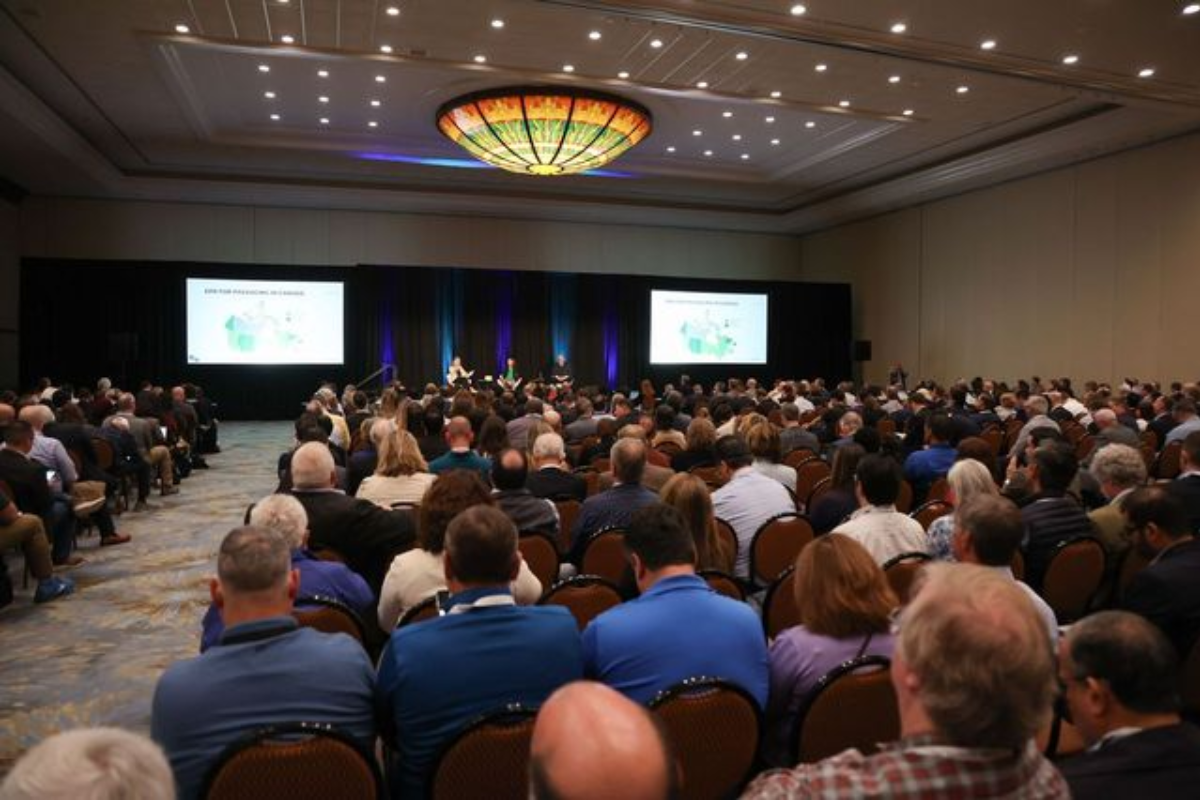
The 2024 Plastics Recycling Conference brought 2,500 attendees together for sessions and a sold-out exhibit hall of more than 240 booths. | Big Wave Productions/Resource Recycling
The 2024 Plastics Recycling Conference kicked off Monday in Grapevine, Texas, bringing energetic conversations around policy, investments and designing for recyclability.
The annual event, which this year ran March 25-27, tallied 2,500 attendees and a sold-out exhibit hall of more than 240 booths.
The first day of sessions included “The State of Plastics Recycling,” with moderator Nina Bellucci Butler, CEO of Stina, leading a conversation with Steve Alexander, president and CEO of The Association of Plastic Recyclers, Jon Vander Ark, president and CEO of Republic Services, and Scott Saunders, general manager of KW Plastics. APR owns Resource Recycling, Inc., publisher of Plastics Recycling Update.
The discussion covered how economic pressures and sustainability goals are leading to an uncertain moment in the industry, the relationship between recycling operators and the consumer packaged goods sector, and what needs to happen to boost recycling further.
Saunders pointed out that consumers are expressing a deep desire for more recycling, and the industry should seize that opportunity. There’s a need to convince cities that don’t have recycling programs to get started, he said, because even though companies like his are investing in upgrades, “if we don’t have material to put in those lines, it’s just equipment.”
Alexander said that the industry “needs to listen to what companies like Jon need” and to work more closely with communities.
“We do such a good job of confusing the consumer,” he said, adding that more consistency in access and labeling is needed at the consumer level. That stability and consistency will then echo up the value chain.
Flexible plastic packaging was also a hot topic, with Vander Ark noting that Republic Services has been looking into chemically recycling flexibles.
He added that with the rise of e-commerce came “a ton of composite materials,” and “we need to innovate on that equipment” to be able to better handle that new material stream.
Alexander said while “film and flexible is eminently recyclable material, it just can’t go through curbside,” and drop-off doesn’t work well, either, due to high levels of contamination.
“We want to recycle it, we know how to recycle it, we know there are markets for it, but how do we get it?” he said.
Saunders said KW Plastics recently left the flexibles segment after nine years, processing between 60 million and 70 million pounds of flexible PP per year.
“When you’re trying to get back to a pellet, the amount of contamination contained in the individual layers is almost impossible to remove economically,” he said.
While contamination is currently an issue, Alexander noted that he sees the plastic recycling industry as “almost the Silicon Valley of the waste industry,” as it’s the first to innovate and respond to new containments.
“At the end of the day we know how to recycle, we’re just going to need a little help,” he said.
Vander Ark also called for everyone to act together and soon, because “if we’re waiting on COP whatever number we’re on now, we’re doomed,” a reference to the United Nations Climate Change Conference.
Looking ahead, there are two more days packed with sessions. Make sure to check the agenda for information on sessions that will cover resin markets, collaboration and film and flexibles.

